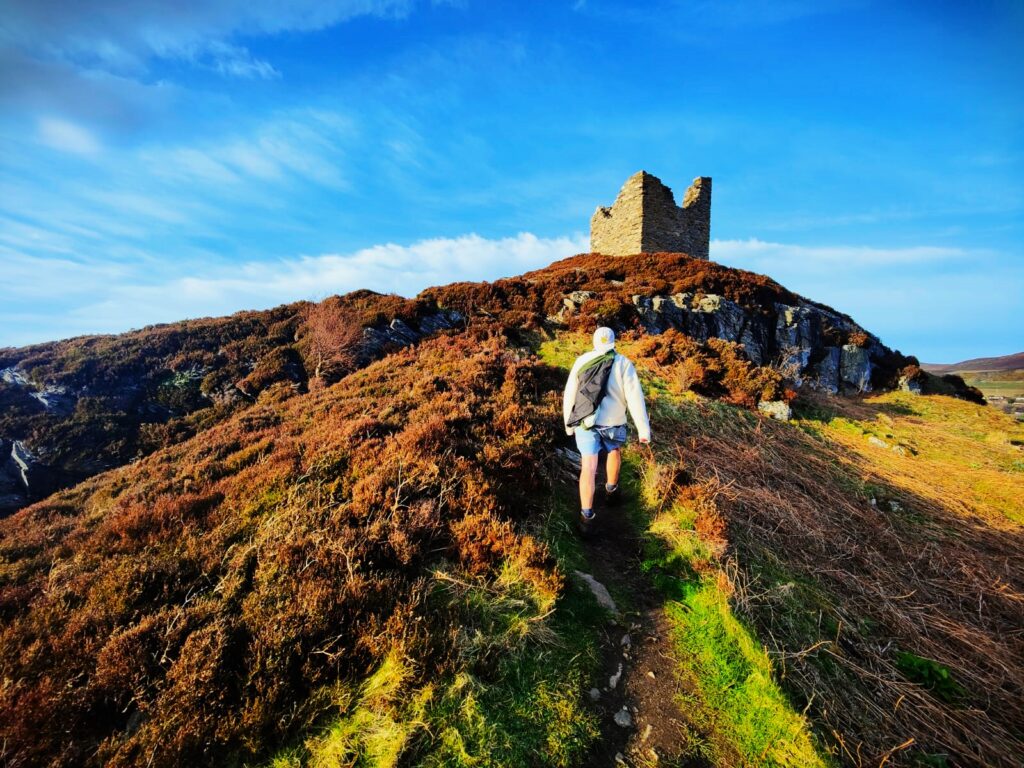
| Academic Year | 2023-2024 |
| r02bm23@abdn.ac.uk | |
| Institution | University of Aberdeen |
Biography
School: School of Geosciences
Project: Unearthing the Secrets of Hill-Fort Vitrification in Early European History
Supervisors: Malcolm Hole, Maarten Blaauw & Dave Muirhead
Undergraduate Education: BSc Geology and Petroleum Geology, University of Aberdeen
Postgraduate Education: N/A
Research: Vitrified hillforts, those further fortified by the melting and fusing of outer rock walls, are found throughout Europe, with a significant number occurring across Scotland. Those specific to Scotland have been dated in origin from the Bronze age to early Medieval history, suggesting a cultural significance to fort vitrification. The circumstances and methods involved in the vitrification of hillforts, however, remain heavily debated.
The process of rock vitrification requires considerable fire technology, capable of melting rock in pervasive temperatures exceeding 1000°C, forming a mineral ‘glass’. In contrast, achieving these temperatures in contemporary settings requires complex equipment and experimental processes. This raises considerable questions as to the possibility of fort vitrification in early European history. An interdisciplinary application of earth science analyses, including rock geochemistry, Raman spectroscopy, and palaeoecology, offers a unique opportunity to investigate how and why fort vitrification was achieved.
The questions will be answered by identifying and sampling rocks, vitrified glasses and charcoals from hillforts across Scotland, Ireland and Europe. These will be used to conduct mineral analysis to understand the changes in rock chemistry during vitrification. Charcoals encased within the glass will be analysed using Raman spectroscopy to calculate the temperatures seen during the fires.
Another avenue of approach is to look at soil and peat bogs local to the hillforts to identify both wind blown charcoals that may correspond to the vitrification event. Pollen and macrofossils will also be studied in order to identify what fuels were being used this also allows us to better understand the environmental conditions.
All of this evidence and data will hopefully be used to conduct experiments of our own, and try and replicate the process invented in the past.
Other:
- Smith, D. C. and Vernioles, J. D. (1997), The temperature of fusion of a Celtic vitrified fort: A feasibility study of the application of the Raman microprobe to the non-destructive characterization of unprepared archaeological objects. Journal of Raman Spectroscopy, 28, 195-197. doi: 10.1002/(SICI)1097-4555(199702)28:2/3<195::AID-JRS86>3.0.CO;2-A
- McCloy, J. S., Marcial, J., Clarke, J. S., Mostafa, A., Wolff, J. A., Vicenzi, E. P., et al. (2021). Reproduction of melting behavior for vitrified hillforts based on amphibolite, granite, and basalt lithologies. Scientific Reports (Nature Publisher Group), 11(1). doi: 10.1038/s41598-020-80485-w
- Theurer, T., Naszarkowski, N., Muirhead, D. K., Jolley, D. and Mauquoy, D. (2022). Assessing modern Calluna heathland fire temperatures using Raman spectroscopy: Implications for past regimes and geothermometry. Frontiers in Earth Science, 10, 827933. doi: 10.3389/feart.2022.827933
- Instagram: Benzoandrocks





















































